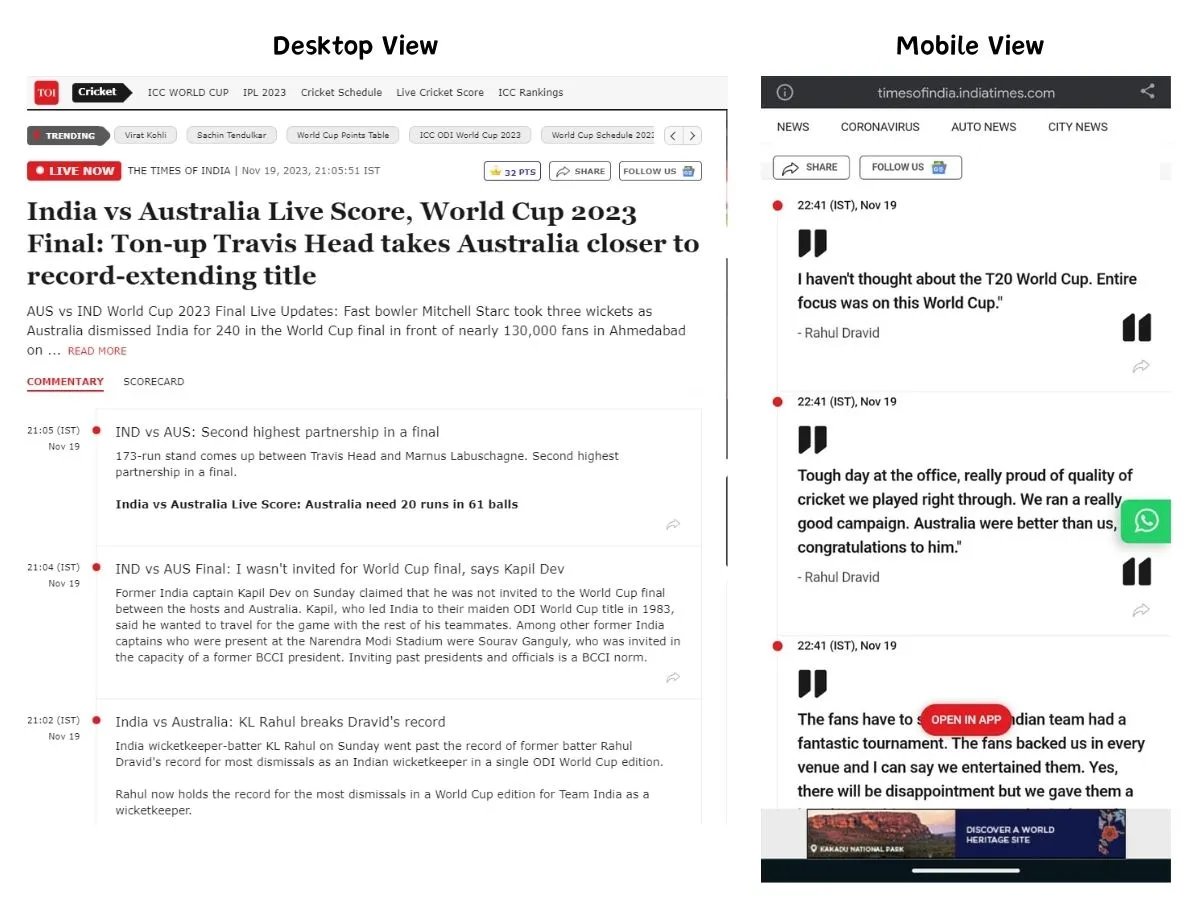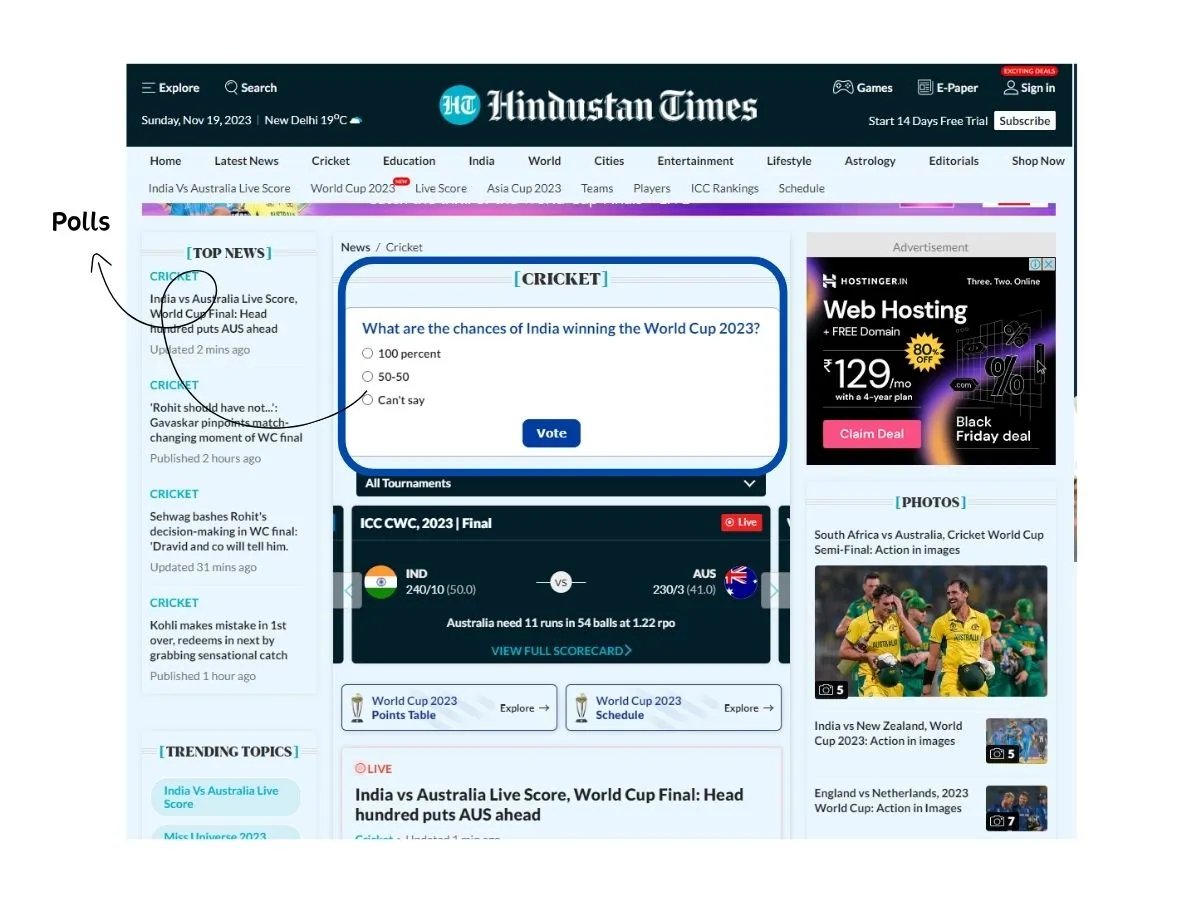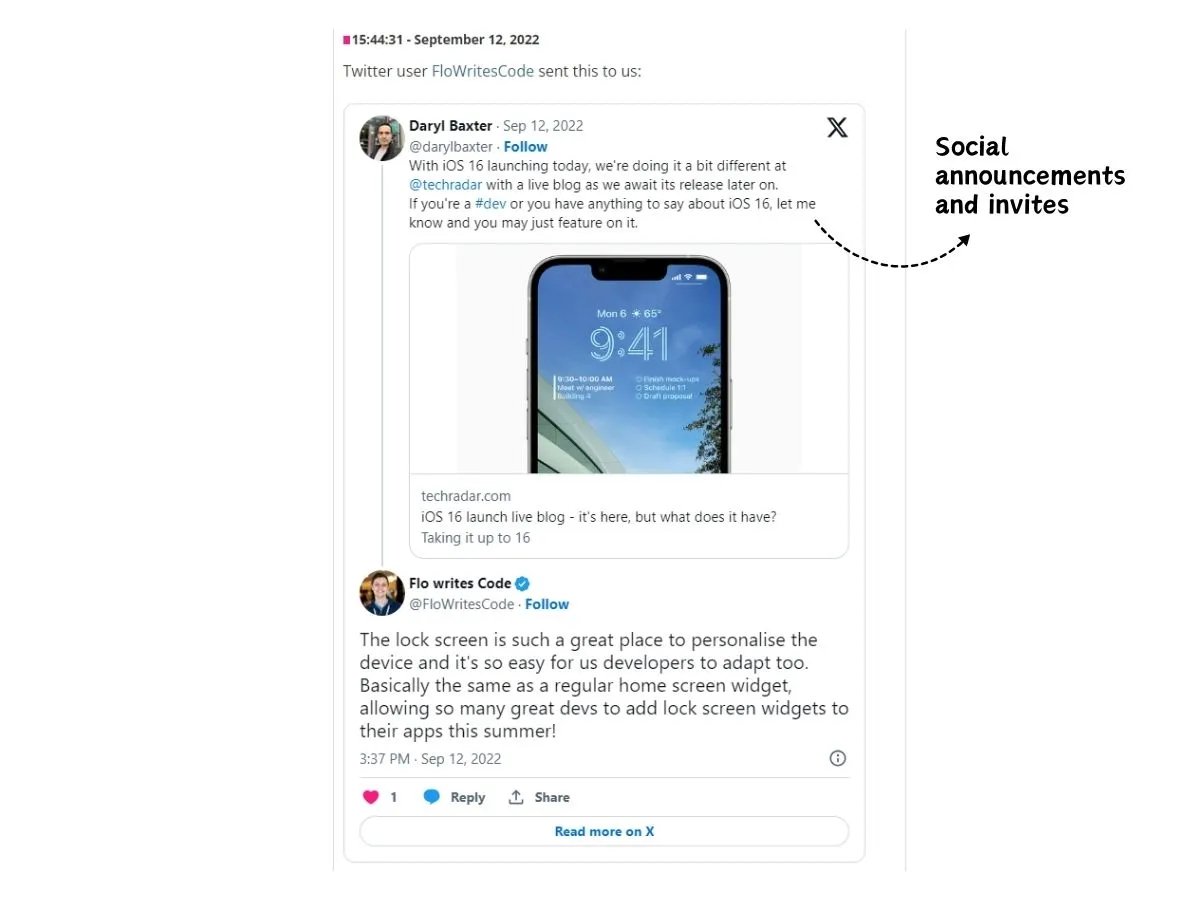Statistics reveal that a whopping 86% of US adults use digital devices to read news, primarily via news websites, apps, social media, and podcasts.
If you’re a news or media publisher, this is your cue to start live blogging popular events in sports, technology, entertainment, etc., to generate traffic, reach new audiences, and boost brand visibility.
Live blogging, also known as live text, is an efficient way to connect with readers and deliver updates in real-time.
Whether you're already running a live blog or considering starting one, understanding the best practices and tips will help you avoid common mistakes and ensure you start on the right foot.
In this guide, we have listed actionable tips and examples to help you optimize and streamline your live blogging process to attract and engage your readers with your content.
Live Blogging Best Practices [2024]
1. Use Compatible Plugins and Tools
CMS, such as Brightspot, Quintype, Durpla, etc., have an inbuilt feature to support live blogging without installing third-party plugins. Before looking for a plugin, check to see if your CMS provider offers this feature.
If you are a digital publisher on WordPress, you must install live blog plugins to access drag-and-drop design features, social media integration, team collaboration, performance insights, etc., as this CMS has no built-in live blog feature.
Once you have the live blogging tool installed or enabled in your CMS, give a trial run to familiarize yourself with the interface, additional elements, processes, and functions.
You can test the feature in the staging environment to preview and check if all the updates are published as a story once the live blog ends. This reduces the risk of errors and ensures a smoother user experience when you launch a live blog for a real-time event.
Bonus: If you’re looking for a live blog plugin for WordPress that offers rich audience engagement features, you should take a look at our curated list of the best live blog plugins.
2. Maintain a Resource Hub
Building a resource hub by gathering event-related information beforehand helps the journalist covering the event to quickly add relevant insights, statistics, images, and videos to the live blog.
This resource repository should include event schedules, speaker bios, relevant images, past event highlights, etc., that are highly relevant to the upcoming event.
All these assets should be handy in an organized folder to prevent last-minute scrambling for information.
3. Have a System in Place
If you have journalists on the field covering the live event, establish a workflow where the live blog author can easily access the latest inputs, photos, videos, etc., from on-field journalists.
Plan where to centralize all the ready-to-use graphics and content so it is accessible to the team members co-ordinating the live blog.
Moreover, assigning roles to each team member, delegating and defining their tasks will help you gather relevant information faster at the time of need.
Also Read: Social Media Distribution Tips for News and Media Publishers
4. Make Your Live Blog Accessible
A clear navigation menu on your website and SERP will help readers easily access the live blog when they land on your page.
If you’re running a live blog for various events such as breaking news, sports, world news, etc., a well-structured navigation bar at the top of the page will quickly guide your reader to the relevant pages.
5. Keep Your Audience in Loop
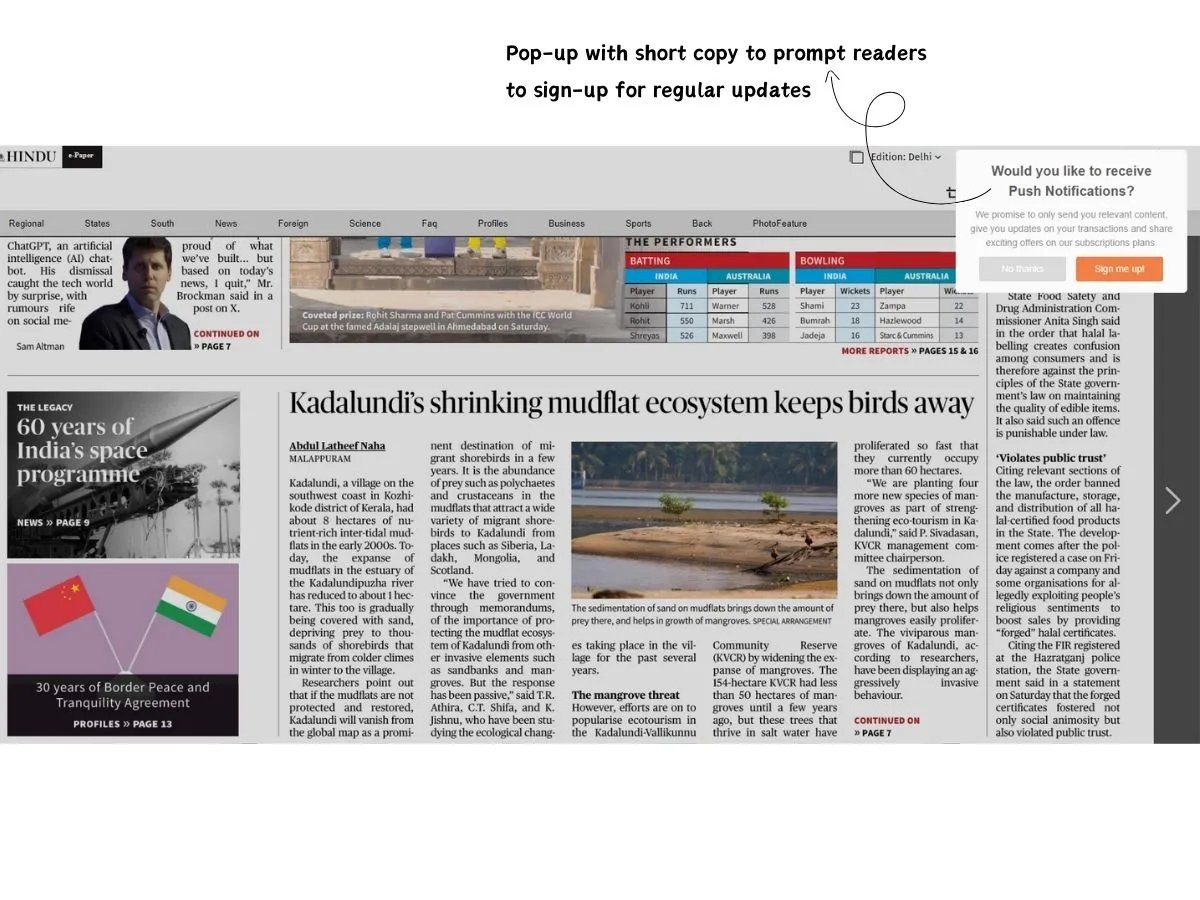 Sending push notifications with news updates that match your reader's interest will help you build an active audience and bring repeat traffic to your site.
Sending push notifications with news updates that match your reader's interest will help you build an active audience and bring repeat traffic to your site.
You can see in the above example how The Hindu is prompting their readers to sign up to get notified about the latest news. A small pop paired with a compelling copy will get your readers to sign up.
Once they opt in, you must send notifications that pique their interest enough to bring them to your website.
For Instance: You can send push notifications to subscribers during a live match, providing real-time updates, scores, and highlights. Sports enthusiasts usually keep tabs on the scores even if they don’t watch the event completely.
This is an ideal option to reel these audiences to your website via push notification. iZooto’s show latest function precisely helps you to feature the latest information on your push notification to deliver a minute-by-minute update to your readers.
6. Ensure the News is Aligned with Your Target Audience
If your target audience is a tech enthusiast and you’re live blogging about fashion events, you’ll find it challenging to gather your reader's attention since you’re targeting a different group of audience.
Hence, it is essential to understand your target audience’s interests and cover relevant events to generate optimum traffic and leverage the existing crowds’ attention.
For Instance: As the name says, Techradar is a technology-based website whose target audience is tech enthusiasts.
Hence, during the iPhone15 launch, they ran a live blog providing real-time updates. This helped them serve their current target audience base and generate organic traffic to their page.
Bonus: If you do not have a niche-specific website, you can run a live blog for varied events, similar to The Economic Times and Times of India, who currently live blog about sports, live events, world news, etc.,
7. Focus on Multimedia
Live blogging is not all about text. You can add relevant images, videos and other graphics to hold your readers' attention.
Visual content is more likely to be shared on social media platforms by your readers.
Publishers who include visuals in their content increase their traffic 12% quicker than those without visuals. Hence, pairing it up with a social share button, as TOI did in the above examples, allows you to reach more audiences and gain audience engagement.
8. Optimize Your Content for Different Devices
60% of all Google searches root from mobile devices. If you optimize your post only for desktops, you’re leaving out potential traffic opportunities. Hence, ensure your site is optimized for mobile, tablets, desktops, and different screen sizes.
Additionally, promote your mobile application for a better user experience when readers access live blogs from a mobile browser.
Further, choose templates or designs compatible with mobile and desktop screens. Preview your content or template before it goes live on your website to ensure your live blog is clutter-free.
9. Use Writing Assistants
Due to the fast-paced environment of a live blog, you may make some editorial errors along the way. Hence, it's best to avoid possible mistakes using writing assistants such as Grammarly, QuillBot, Wordtune, etc., to ensure your copy is error-free.
Most writing tools have a Chrome browser extension. Thus, you can easily integrate it into your writing process irrespective of your platform. These tools allow you to focus on the content and insights rather than worrying about grammatical errors.
Bonus: Here are the top AI-powered paraphrasing tools that can help improve your copy.
10. Engage With Your Readers
Unlike traditional news, a live blog is not a one-way communication. Allowing your readers to interact with your content will keep them hooked to your website and boost audience retention.
Hence, create polls, quizzes, open live chat to encourage readers to actively participate and prompt them to share their opinions to boost engagement and involvement.
11. Invite Guest Writers or Posts
You can conduct interviews, include industry experts' opinions, and use content creators' insights in your live blog to deliver new and expert insights to the readers.
In the above example, Techradar featured one of their follower inputs on their live blogs during the iOS16 launch. If your editor does not have subject matter expertise about an event, it is ideal to leverage your community’s knowledge. However, cross-check if the information provided is legit before featuring it in your blog.
Also Read: Top 8 News and Media Monitoring Tools For Publishers
Next Steps
Once you wrap your first live blog, take a step back and analyze your performance to understand what worked well and what needs improvement. This allows you to tweak your strategy accordingly for the next event.
From planning and preparation to maintaining accuracy and engagement, each practice plays a crucial role in creating a successful live blog.
With these best practices, news and media publishers can take their live blogging efforts to the next level and create a truly seamless and engaging experience for their readers.
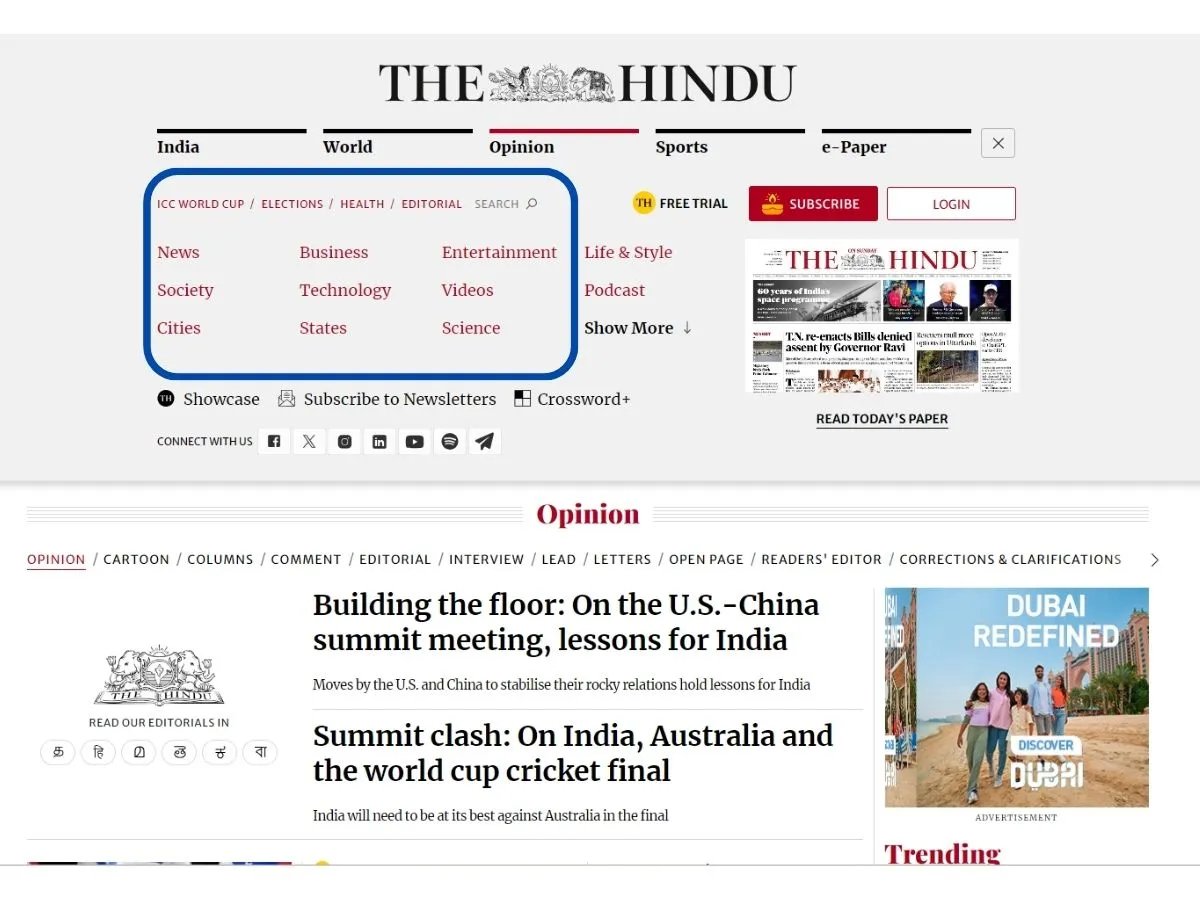
.webp?width=1200&height=900&name=Tech%20live%20blog%20(iphone%20launch).webp)

